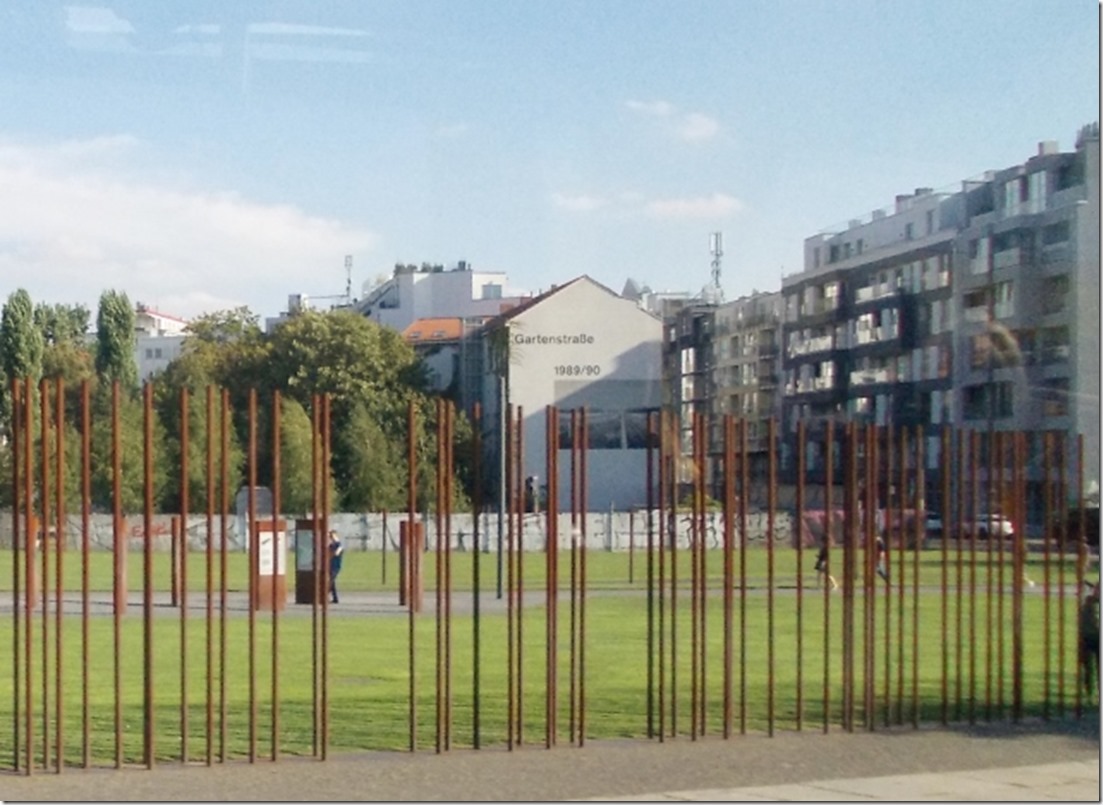
Day 7 – 9/2 – Berlin (Part 2)
The most visible remaining symbols of the division of Berlin into East & West are the few remaining parts of the Berlin wall. Some of these are crumbling, pretty much being allowed to deteriorate.
Other parts of the wall have been decorated by local artists – the most famous section is simply called “The Kiss”. The socialist fraternal kiss, a communist tradition, became famous via Erich Honecker and Leonid Brezhnev, who were photographed exercising the ritual. During the festivities of the 30th anniversary of the German Democratic Republic of East Germany in 1979.
In this section of the wall the rebar was left, the concrete removed, and the “dead man’s strip” in the middle turned into a park. A great use for the land which was formerly patrolled by dogs and covered by machine guns from towers.
This photograph of an East German guard escaping to the west is prominently displayed in the park.
Is this guy escaping from the East?
Checkpoint Charlie, became famous as the primary entry portal from East Berlin to the American sector. What was formerly a guard post that was “all business” now is a busy tourist stop, with “guards” dressed as American soldiers posing with tourists, a McDonalds nearby and a ton of shops of all kinds. Capitalism definitely won this cold war.
The American soldiers in Berlin, mostly MPs, had a post located in an exclusive West Berlin neighborhood. Most of the barracks and other buildings have been converted to apartment and retail buildings, but the post theater is now a museum dedicated to the period and particularly to the Allied support of Berlin during the blockade. By treaty, Berlin, which is located deep in East Germany, in territory held by the Russians, would be occupied by the British, French, Americans, and Russians. In an attempt to take over complete control of Berlin, the Russians cut off all transportation to Berlin, to try and starve the citizens, forcing the Allies to give in. Instead, the Allies created a massive, round the clock, airlift keeping the city alive until the Russians gave in.
This is British Lancaster, used during the airlift to supply coal to the city.
A section of the wall and guard tower have been moved to the museum.
This is a section from a tunnel dug under the wall by American agents to tap into the phones of the Russians. It was useful for a brief time until compromised by a British double agent – George Blake. Even if he had not given it up, it became useless when snows came and the ground above tunnel was so warm the snow melted.
We made our way back to the train station and boarded for the trip back to Warnemunde. This time the 3 hours flew by as we had a most pleasant discussion with Gonsalo and Letecia of Monterey, Mexico.
.










